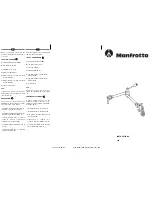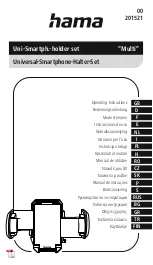
45
Figure 8-2
A collimated telescope
should appear as a
symmetrical ring pattern
similar to the diffraction
disk seen here.
sit outside for 15 to 30 minutes before attempting collimation. You should also wait for a night with good seeing conditions and
avoid looking over anything that produces heat waves (i.e., roof tops, car hoods, etc.).
Pick a bright star and center it in the field of the telescope. Study the image of the star while racking it in and out of focus using
an eyepiece that yields 30 to 60 power for every inch of aperture. If an unsymmetrical focus pattern is present, then collimation is
necessary. (If the telescope is properly collimated, the out of focus star image will appear as a concentric ring pattern similar to
that shown in Figure 8-2).
To collimate, the telescope should be on either a motor driven (i.e., tracking) equatorial mount that is approximately polar aligned
or pointed at a stationary star without the motor drive running. Polaris, the North Star, is the perfect collimation star for northern
hemisphere observers since it appears motionless against the background sky long enough to perform the collimation procedure.
Polaris is the last star in the handle of the Little Dipper (Ursa Minor) and its distance above the northern horizon is always equal
to your latitude angle.
Prior to collimating, locate the three (3) screws on the objective lens housing on the front of the tube. (These screws attach the
objective lens housing to the main tube and should not be removed). It may be necessary to remove the lens shade from the front
of the tube to allow easy access to the collimation screws. Next to each mounting screw is a shorter Allen screw that pushes
against the optical tube to pivot the objective lens housing (see Figure 1). In order to make an adjustment, the outer screw is
loosened while the Allen screw is turned in or out. Then, the outer screw is tightened. Only one of the three (3) sets is adjusted at
a time. Normally motions on the order of 1/8 turn will make a difference, with only about 1/2 to 3/4 turn being the maximum
required.
Do NOT remove or back out the holder screws more than one (
1
) to two (2) turns!
With Polaris or another bright star centered in the field of view, focus with your highest power
eyepiece (i.e., one with the shortest focal length). This includes eyepieces in the 4mm to 6mm range.
The star should be well centered in the field of view of the eyepiece. It may be helpful for two people
working together, while one views and instructs the other which screws are correctly turned and by
how much. Start by loosening the Phillips head screws about 1 turn and advancing the Allen screw to
see if the motion is correct. If not, undo what you did and try another set of screws.
After making the first of each adjustment, it is necessary to re-aim the telescope tube to center the star
again in the field of view. It can then be judged for symmetry by going just inside and outside of exact
focus and noting the star’s pattern. Improvement should be seen if the proper adjustments are made.
Since three (3) sets of screws are present, it may be necessary to move at least two (2) sets of screws to
achieve the necessary lens movement. Do NOT over tighten the outer holding screws!
Once in collimation, your telescope should not need additional collimation unless the telescope has
been bumped or jarred severely. In fact, most observers will find the telescope’s collimation right out
of the box to be satisfactory. Exact collimation is only necessary for discriminating observers that
require optimal imagery.
Collimating Eyepiece
-
Your refractor includes a collimating eyepiece that can help you to roughly check the alignment of
your telescope in the daytime. The collimating eyepiece has a pin hole site that helps you determine if the optics are properly
aligned with the tube. With the focuser racked in all the way and the diagonal removed, place the collimating eyepiece inside the
focuser tube. If the telescope is properly collimated, you should be able to see the entire edge of the objective lens when looking
through the pin hole. If the objective lens appears oval, then it may be necessary to collimate the telescope as described above.
Summary of Contents for Advanced Series C6-RGT
Page 60: ...60 APPENDIX E MAPS OF TIME ZONES ...
Page 61: ...61 ...
Page 62: ...62 ...
Page 63: ...63 ...
Page 64: ...64 ...
Page 65: ...65 ...
Page 66: ...66 ...
Page 67: ...67 3 ...
















































